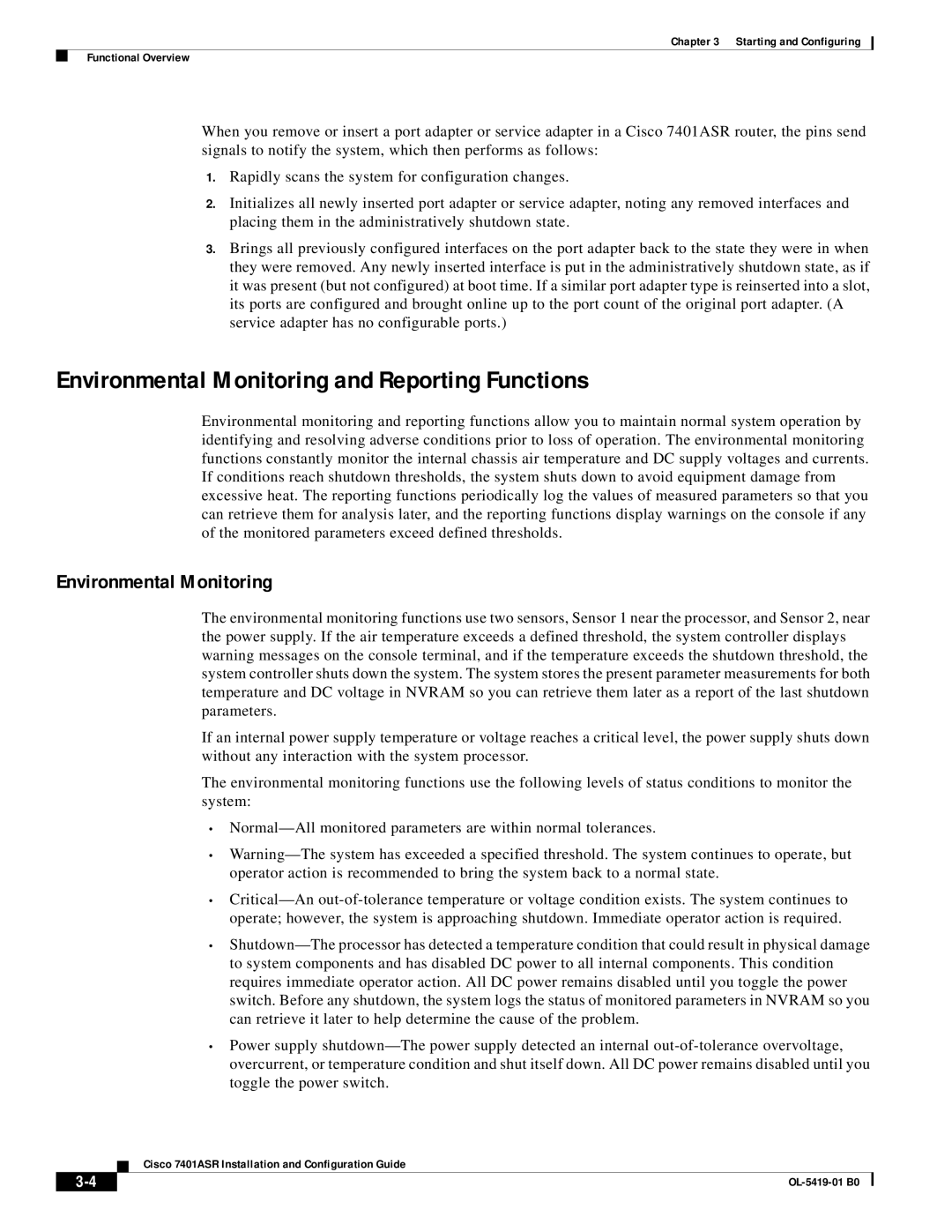
Chapter 3 Starting and Configuring
Functional Overview
When you remove or insert a port adapter or service adapter in a Cisco 7401ASR router, the pins send signals to notify the system, which then performs as follows:
1.Rapidly scans the system for configuration changes.
2.Initializes all newly inserted port adapter or service adapter, noting any removed interfaces and placing them in the administratively shutdown state.
3.Brings all previously configured interfaces on the port adapter back to the state they were in when they were removed. Any newly inserted interface is put in the administratively shutdown state, as if it was present (but not configured) at boot time. If a similar port adapter type is reinserted into a slot, its ports are configured and brought online up to the port count of the original port adapter. (A service adapter has no configurable ports.)
Environmental Monitoring and Reporting Functions
Environmental monitoring and reporting functions allow you to maintain normal system operation by identifying and resolving adverse conditions prior to loss of operation. The environmental monitoring functions constantly monitor the internal chassis air temperature and DC supply voltages and currents. If conditions reach shutdown thresholds, the system shuts down to avoid equipment damage from excessive heat. The reporting functions periodically log the values of measured parameters so that you can retrieve them for analysis later, and the reporting functions display warnings on the console if any of the monitored parameters exceed defined thresholds.
Environmental Monitoring
The environmental monitoring functions use two sensors, Sensor 1 near the processor, and Sensor 2, near the power supply. If the air temperature exceeds a defined threshold, the system controller displays warning messages on the console terminal, and if the temperature exceeds the shutdown threshold, the system controller shuts down the system. The system stores the present parameter measurements for both temperature and DC voltage in NVRAM so you can retrieve them later as a report of the last shutdown parameters.
If an internal power supply temperature or voltage reaches a critical level, the power supply shuts down without any interaction with the system processor.
The environmental monitoring functions use the following levels of status conditions to monitor the system:
•
•
•
•
•Power supply
Cisco 7401ASR Installation and Configuration Guide
| ||
|
